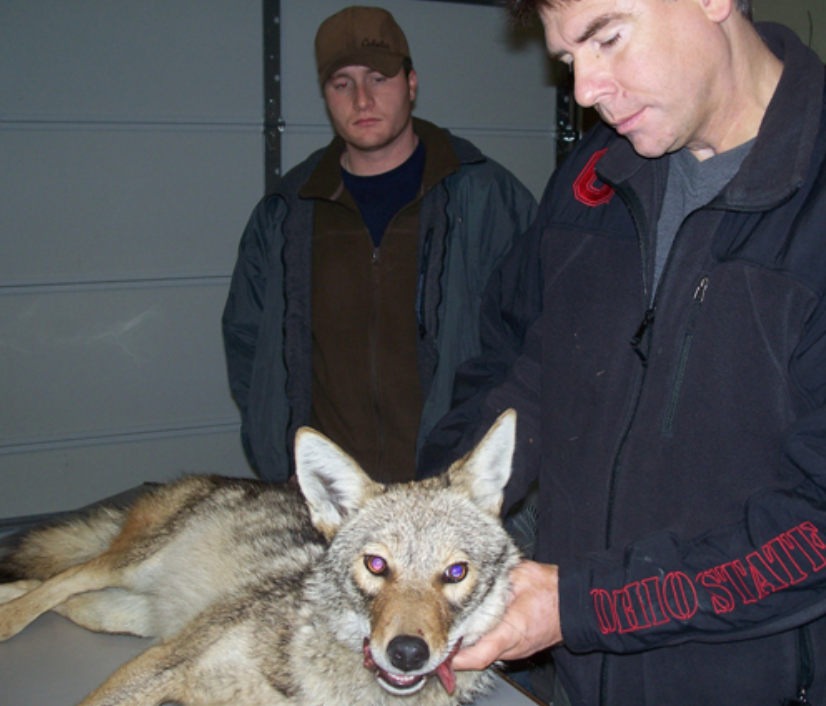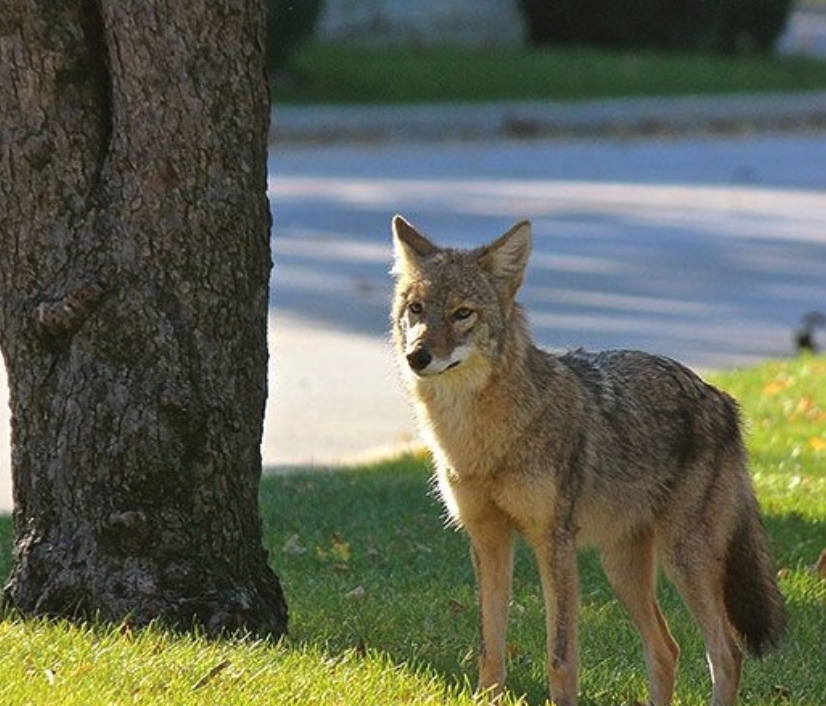
Animal Control Services
Animal Control Services
Email Animal Control Officer Golliher
The Schaumburg Police Department’s Animal Control Officer wants you and your pets to be good neighbors. Often a friendly warning or a word of advice is all it takes.
The Animal Control Officer and Community Service Officers provide the following services:
- Enforcement of all animal-related laws and ordinances.
- Transportation of stray domestic animals found within the village limits to the department’s authorized animal hospital/shelter.
- Assistance with nuisance stray/feral cat problems. Humane traps for stray/feral cats are available upon request at no charge by calling (847) 348-7221.
- Investigate complaints of animal cruelty or neglect.
- For complaints regarding animals, contact the Schaumburg Police Department at (847) 882-3586 or dial 311 in the village.
- If you have wildlife inside the living space of your home, dial 311 or 911 for assistance.
Pet Information
It’s Not Cool to Leave a Dog in a Hot Car!
Leaving a dog inside of a car on a hot summer day can be dangerous and even deadly. The temperature inside a car can go up after just a few minutes. When the sun is shining directly on a vehicle, the car windows collect light, trapping heat inside and pushing temperatures to dangerous and even deadly levels. On a sunny day where the outside temperature is between 80 to 85 degrees, it only takes about 10 minutes for temperatures inside a vehicle to reach 100 degrees, even with the windows cracked. When temperatures reach 100 degrees, pets are in danger of suffering heat stroke. On a hot and humid day, the temperature in a car parked in direct sunlight can rise more than 30 degrees per minute, and quickly become lethal for your pet. If you see a dog left inside a vehicle on a hot day, dial 911 to report it.

In six years, one female dog and her offspring can produce 67,000 puppies. In seven years, one female cat and her young can produce 420,000 cats. The average animal shelter can only find homes for 10-50% of the animals impounded. Every year 6 to 12 million animals die in shelters. The bottom line is, there are too many pets and not enough homes. These figures can be significantly reduced when procreation is controlled by spaying and neutering one’s pets.
 Spaying is the surgical removal of the uterus and both ovaries in a female dog or cat. Neutering is the surgical removal of both testicles on a male dog or cat. Both are performed as painless procedures under anesthesia. This is also known as “altering” or “fixing” your pet.Still thinking about whether or not you should have your pet spayed or neutered? Many people find themselves struggling with this decision when they get a new pet, wondering if it’s worth the expense, or whether it hurts their pet to have them fixed. Although there are many rumors and myths about spaying and neutering, the facts show that it is one of the most important things you can do as a responsible pet owner to ensure the safety and happiness of your pets. The benefits of spaying or neutering your pets outweigh any potential downside, both for the individual pet and the overall pet population. In fact, spaying or neutering is one of the best things you can do for your pet, your home, and your community.Spay and neuter surgery carries a one-time cost that is relatively small compared to its long-term benefits. Getting pets spayed or neutered helps them live longer, healthier lives because spaying or neutering your pet will lower the risk of it contracting a number of potentially dangerous diseases. For example, the risk of cancers – ovarian, uterine, and breast in females, and testicular and prostate in males – is dramatically reduced once the animal has been fixed. This alone increases the life expectancy of your pet. Animals that are not sterilized often exhibit more behavioral and temperament problems than those who have been spayed or neutered. Sterilizing your animal lessens their aggressive tendencies and will make them more affectionate companions. The neutering of male dogs and cats will lower their testosterone levels; as a result, the male pet will be less likely to spray and mark his territory. Spaying female dogs and cats removes the menstrual or heat cycles which will prevent them from reproducing unwanted litters. All animals that have been spayed or neutered are less likely to roam, run away, or get into fights and bite other animals.
Spaying is the surgical removal of the uterus and both ovaries in a female dog or cat. Neutering is the surgical removal of both testicles on a male dog or cat. Both are performed as painless procedures under anesthesia. This is also known as “altering” or “fixing” your pet.Still thinking about whether or not you should have your pet spayed or neutered? Many people find themselves struggling with this decision when they get a new pet, wondering if it’s worth the expense, or whether it hurts their pet to have them fixed. Although there are many rumors and myths about spaying and neutering, the facts show that it is one of the most important things you can do as a responsible pet owner to ensure the safety and happiness of your pets. The benefits of spaying or neutering your pets outweigh any potential downside, both for the individual pet and the overall pet population. In fact, spaying or neutering is one of the best things you can do for your pet, your home, and your community.Spay and neuter surgery carries a one-time cost that is relatively small compared to its long-term benefits. Getting pets spayed or neutered helps them live longer, healthier lives because spaying or neutering your pet will lower the risk of it contracting a number of potentially dangerous diseases. For example, the risk of cancers – ovarian, uterine, and breast in females, and testicular and prostate in males – is dramatically reduced once the animal has been fixed. This alone increases the life expectancy of your pet. Animals that are not sterilized often exhibit more behavioral and temperament problems than those who have been spayed or neutered. Sterilizing your animal lessens their aggressive tendencies and will make them more affectionate companions. The neutering of male dogs and cats will lower their testosterone levels; as a result, the male pet will be less likely to spray and mark his territory. Spaying female dogs and cats removes the menstrual or heat cycles which will prevent them from reproducing unwanted litters. All animals that have been spayed or neutered are less likely to roam, run away, or get into fights and bite other animals.
The cost of spaying or neutering depends on the sex, size, and age of the pet, your veterinarian’s fees, and a few other variables. For more information about spaying or neutering, contact your veterinarian.
Click here for information on Cook County’s low cost spay/neuter program.
The Village of Schaumburg would like to encourage you to help control the pet overpopulation. Be a part of the solution. Please have your pet spayed or neutered.
Coyote Information


Coyotes in Schaumburg? YesToday, you are just as likely to see a coyote in Schaumburg as in Arizona. Over the past several years, coyote sightings have become more prevalent within the village and surrounding communities. Although you may be shocked to see a coyote running through the village, it is not unusual. Due to the rapid loss of habitat by development, many coyotes have found themselves forced to cohabit with humans.
Where do they live?
Coyotes are typically found in brushy areas, wooded edges, and open grasses—they are not found in heavily wooded areas, as many people believe. They also can be seen occasionally walking down a village street. Coyotes like to travel along trails, paths, and waterways. They are most active at night, but are often seen during the day, especially in the summer when their pups are more active. Coyotes sometimes hunt in family units but are often alone or in male/female pairs. They do not form “packs” like their wolf cousins.
What do they eat?
The diet of coyotes consists of mostly small mammals including mice, rabbits, and moles, but they will also eat fruits and vegetables, especially in the fall. Coyotes rarely kill prey larger than themselves.
Do they attack humans?
Statistics from the Illinois Department of Natural Resources call attacks on humans extremely rare, with only 16 documented cases in all of North America in the last 30 or so years. The majority of these cases occurred when people tried to hand feed the animals.
- Residents with small pets (less than 20 pounds) should supervise them while outdoors as you would a small child.
- ALWAYS use a leash when walking your dog on public property, per village ordinance. Retractable leashes are not recommended as they tend to jam and can make it difficult for you to reel in your pet from a predator. VOS Ordinances states leashes cannot be longer than 6 ft. in length (VOS 92.30Q).
There has not been a documented case of a coyote attacking a domestic pet which is being walked on a leash by its owner. Coyotes have a natural fear of humans and will be less likely to approach a pet which is secured to a leash with the owner present. Residents need to keep their dogs on leashes and supervise them when they are outdoors at dusk and after dark, and keep their cats indoors.
What should I do?
- Do not leave food out for coyotes or other wildlife.
- Parents should educate their children on how to identify and stay away from coyotes and other wildlife.
- If possible, keep your garbage cans in the garage.
- When letting your dog out at dusk or after dark, check the yard for any type of wild animal. Dogs should never be let off the leash when there is a presence of coyote in the area. If you know there are coyote in the area, remain in the yard with your dog. Be aware coyotes can jump fences up to approximately 5-6 feet, so if there are coyote present in your neighborhood remain in the yard with your dog.
- Turn lights on and make some noise in order to scare off any possible wild animal that may be in the immediate area.
Following these simple precautions will reduce the risk of a coyote or other wild animal to prey on your pets.
Illinois Department of Natural Resources
According to the Illinois Department of Natural Resources, trying to reduce and “control” the coyote population (i.e., create a “vacuum”), will not work. Coyote reduction has not worked in about 250 years and it’s not likely to work now or in the future. Holes created by an animal’s death are almost always filled within three to four weeks, thus, attempts to keep coyotes out of an area must be intense and unrelenting. The Village of Schaumburg does not participate in trapping of coyote or other wildlife in and around the village.
Coyote Facts
- 80 percent of a coyote’s diet is comprised of mice and other rodents. They are nature’s version of rodent control. They are omnivores and eat watermelons, insects, apples, dog food from back porches, and fish.
- Coyotes are not endangered
- Killing a coyote may actually increase the population the following year.
- A coyote can have a personal range of 2,000 to 10,000 acres.
- Coyotes are timid animals with a natural fear of humans. They are curious animals and may watch you from a distance. Usually they will run from you long before you see them.
- Coyotes are monogamous and mate for life.
Coyotes Appearance
- Coyotes Appearance
- Approximately 24 inches tall and weigh between 20 and 50 pounds
- Yellowish gray with a whitish throat and belly
- Long, coarse fur
- Dark band down their back
- Bushy, blacked tipped tail
- Runs with tail downward and may attain speeds of 40 mph
- Lives in a burrow
Living With Wildlife
Wildlife in urban areas is becoming a common occurrence. With the amount of wildlife in Illinois, it is only natural as areas develop more and more encroachment of wildlife habit ant takes place. Couple development with green spaces and trails, which give wildlife easy access to developed areas and the problems grow.
Feeding wildlife only causes them to be more dependent on the human population. They lose fear of humans through the feeding process, and gather in larger groups than is natural because of created feeding stages. The following tips will help you make sure you don’t provide a wildlife attraction at your home.
- Do not allow wildlife to have access to food you place outside for your domestic pets such as cats and dogs. If you have to feed your pets outside, pick up any left over food immediately.
- Protect your garbage. Make sure lids are tight and cannot be opened. A simpler solution would be to keep garbage cans inside a garage if possible.
- Watch over your garden, harvesting fruits and vegetables as soon as possible.
- If you feed wild birds, make sure the feeders are out of reach of other wildlife.
- Do not put any other type of food out for wildlife or stray cats. Placing this food in your yard will attract many types of wildlife
- Do not provide shelter for wildlife. A shed in poor repair is an invitation to wildlife. Make sure crawl space vents are covered or screened. Check under your eaves to make sure there is no entrance there. Prune branches that overhang your house. Deny access to wildlife by weather stripping around doors and windows.
- If you have had your home invaded, try and make their surroundings less inviting. Turn on bright lights, or play a radio loudly. Sometimes they can be deterred with mothballs or ammonia-soaked rags. Remember your pet needs to be protected from these same measures. Once nuisance wildlife has left, remember to wildlife proof your home.
Any questions regarding wildlife can be directed to Animal Control Officer Sandy Golliher at email.
If you are having problems with nuisance wildlife outside of your home such as raccoons, opossums, skunks, etc., you will be referred to a licensed wildlife relocation service.
Below is a list of just a few of the local wildlife removal agencies- There are several other listings in the yellow pages under “animal removal”.

Wildlife Agencies
All Wildlife Animal Eviction: 847-882-2523
Northwest Suburban Animal Control: 847-934-1900
Animal Trackers Wildlife Co: 847-884-1057 (24 hrs)
Critter Detectives: 630-916-7678 or 888-271-8837
Animal Control Specialists: 847-487-7200
AMPEST: 847-702-PEST(7378)
ABC Wildlife: 847-870-7175
Flint Creek Wildlife Rehab: 847-842-8000 (Birds of Prey/Orphaned Wildlife)
Animal Impoundment Agencies/Kennels
Golf Rose Animal Hospital: 847-885-3344 (24 hrs)
Golf Rose Pet Lodge: 847-885-2122
Almost Home Foundation: 630-582-3738
Buddy Foundation: 847-290-5806
Kay’s Animal Shelter: 847-259-2907
Chicagoland Dog Rescue: 847-259-6458
Live humane traps are only loaned out to residents for nuisance stray/feral cat problems. Residents can obtain their own temporary trapping permit by contacting the Illinois Department of Natural Resources.
Additional Resources:
Visit Wildlife Illinois website for more information on coexisting with wildlife in Illinois. You will find valuable information on how to identify the animal that has become a nuisance and solutions on how to deal with the problems the animal is causing.